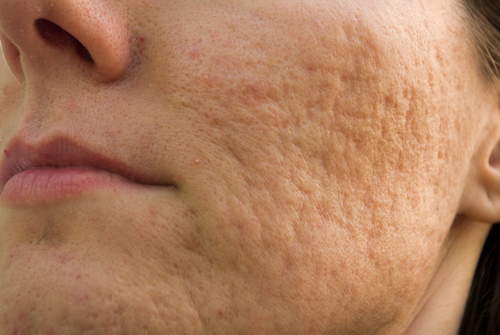If you see signs that your acne is leaving a scar on your skin, you don’t have to grin and bear it. There are lots of ways to heal your scars and keep new ones from forming.
Cortisone and Fade Creams
If your scar is red or swollen, use a cortisone cream to calm your skin and Dr. Rueckl will prescribe the right strength for your particular scarring.
The cortisone is absorbed by skin cells and reduces inflammation. You can buy skin creams with cortisone without a prescription but let Dr. Rueckl determine your best route. Next, you’ll want to concentrate on lightening any dark areas left from the acne scar.
“Hydroquinone, a popular skin lightener, has recently fallen out of favor and is now being omitted from many fading creams due to irritation and carcinogenic concern,” Rueckl says.
But there are other ingredients in skin creams sold without a prescription that can help lighten your dark spots. Kojic acid (a natural skin lightener derived from mushroom extract), arbutin (also called bearberry extract), andvitamin C (ascorbic acid) are great alternative ingredients to look for in lightening creams.
Laser and Filler Treatments
If your acne scars don’t fade away on their own, it may be time to consider booking an appointment with us. In one to three sessions, laser skin resurfacing using fractionated laser technology can even out the skin surface and increase the formation of new collagen. Collagen is a protein that’s a building block of the skin. The new collagen can help fill in acne scars. Ablative lasers vaporize your scar, allowing smoother skin to take its place. Non-ablative lasers help activate the production of collagen without damaging the surface of your skin.
Filler injections can help fill in the indentations left behind from deep acne scars. But the downside to fillers is that they need to be repeated every 4 to 6 months, as the product reabsorbs into the skin over time.
Patience
The main key to seeing acne scars fade is patience. A few weeks after you break out and scar, new blood vessels move into the injured area to give nourishment to the skin, which is why most early scars look pink. Months later, collagen starts to form, filling in the injured section of skin. Because cystic acne destroys skin and fat, it can take up to a year for the scars to fade.





